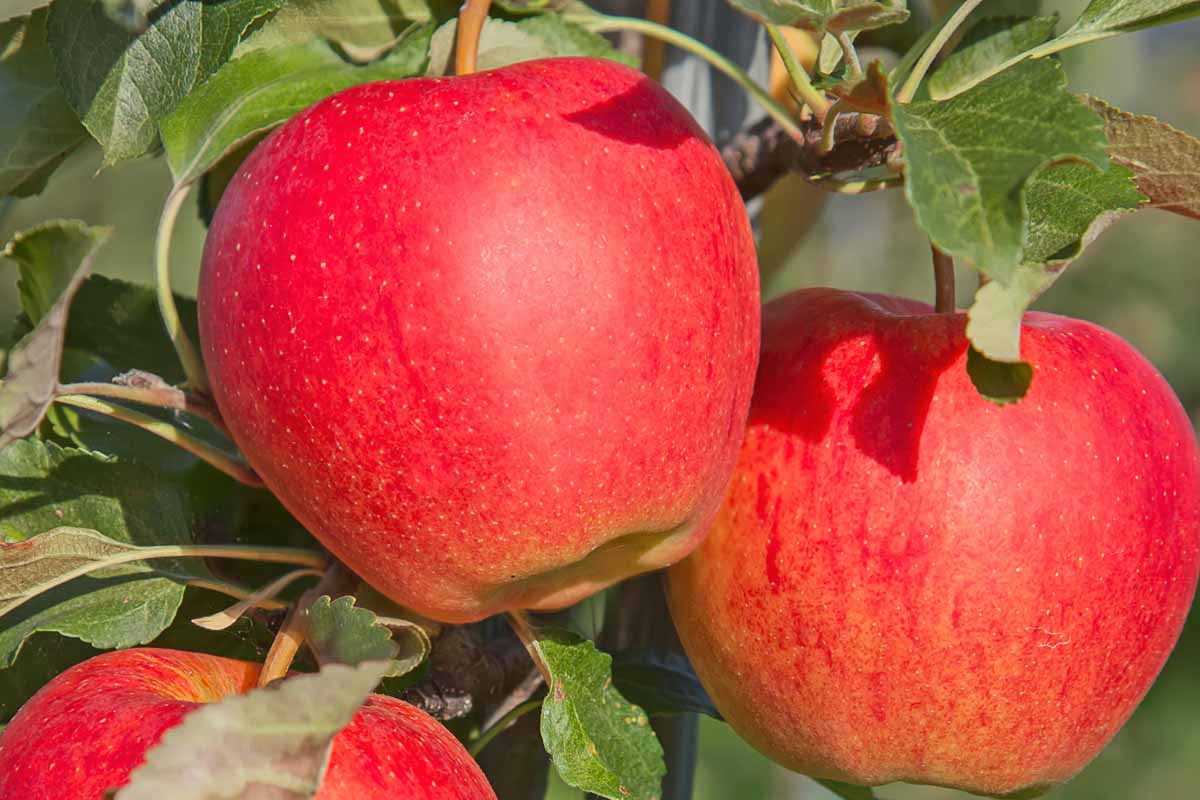
Dual-purpose apple trees are versatile and practical choices for British gardens. These trees produce apples that are suitable for both eating fresh and for cooking, making them an excellent choice for those who want the best of both worlds. Unlike apples that are strictly for eating or only suitable for cooking, dual-purpose varieties strike a balance between flavor and texture, offering the flexibility to enjoy them straight off the tree or in your favorite recipes.
Benefits of Dual-Purpose Apples
One of the key benefits of growing dual-purpose apple trees is the convenience and versatility they offer. You can enjoy a crisp, juicy apple in autumn and then use the same apples to make pies, sauces, or preserves later in the season. This flexibility can be particularly advantageous in smaller gardens where space is limited, allowing gardeners to maximize the utility of each tree.
Moreover, dual-purpose apples often have a longer storage life compared to dessert apples, which means you can keep them for an extended period without compromising their quality. This is especially useful for those who want to enjoy home-grown produce throughout the winter months.
Popular Dual-Purpose Varieties for British Gardens
There are several varieties of dual-purpose apple trees that thrive in the British climate. Each variety has unique characteristics that cater to different tastes and growing conditions.
Bramley’s Seedling
One of the most famous dual-purpose apples in Britain, ‘Bramley’s Seedling’ is renowned for its excellent cooking qualities. When used fresh, it offers a tart flavor that is perfect for baking. This variety is highly productive and has a long storage life, making it a staple in many British gardens. It’s particularly valued for its ability to retain its flavor and texture when cooked, making it ideal for pies and crumbles.
Egremont Russet
‘Egremont Russet’ is a classic British apple with a distinctive nutty flavor and a firm texture that makes it suitable for both eating and cooking. This variety is less acidic than ‘Bramley’s Seedling,’ which makes it an excellent choice for those who prefer a milder taste. Its russeted skin adds to its appeal, providing a unique visual and textural contrast in dishes.
Katy
‘Katy’ is a Scandinavian variety that has become popular in Britain due to its sweet, slightly tart flavor. It is a versatile apple that works well in both sweet and savory dishes, and it is also excellent for juicing. Its bright red skin and crisp flesh make it a beautiful addition to any garden. ‘Katy’ apples are typically ready to harvest in late summer, providing an early supply of fruit.
Charles Ross
‘Charles Ross’ is another excellent dual-purpose variety known for its large, juicy apples that are perfect for both fresh eating and cooking. This variety produces apples with a sweet-tart flavor that is ideal for making cider or baking. Its striking red and yellow skin adds a vibrant touch to any garden.
Planting and Caring for Dual-Purpose Apple Trees

Growing dual-purpose apple trees in Britain requires some knowledge and care, but the rewards are well worth the effort. Here are some essential tips for planting and maintaining your apple trees to ensure a bountiful harvest.
Choosing the Right Location
Apple trees need a sunny location with well-drained soil to thrive. It is essential to choose a spot that receives at least six hours of direct sunlight each day. While apple trees can tolerate a range of soil types, they prefer loamy soil that is rich in organic matter. Before planting, ensure the site is free from waterlogging, as excessive moisture can lead to root rot and other diseases.
Planting Your Tree
Dig a hole twice the width and same depth as the root ball when planting an apple tree. To promote root spread into the nearby soil, gently tease out the roots. Putting the tree in the hole, make sure the graft union—the point where the tree is joined to the rootstock—is above ground level. To remove air pockets, carefully firm the dirt around the roots as you backfill the hole.
To help settle the ground, give the tree plenty of water after planting. Mulch applied around a tree’s base can help keep moisture in and weeds out, but keep it away from the trunk to avoid rotting.
Watering and Feeding
Young apple trees require regular watering, especially during dry spells. As the tree matures, it will become more drought-tolerant, but it is still important to water deeply during prolonged dry periods to ensure the roots have sufficient moisture.
Using a balanced fertiliser, feed your apple tree in the early spring to encourage good growth and fruit output. Steer clear of overfertilizing since this can cause vegetative growth to outweigh fruiting. A natural substitute for synthetic fertilisers is compost or thoroughly rotted manure.
Pruning for Productivity
The health and output of your apple tree depend on routine pruning. Before the tree begins to sprout, prune in late winter or early spring. The idea is to build an open, vase-like framework that lets air and light into the canopy, which lowers the chance of illness and promotes fruit production.
Take off any dead, damaged, or diseased branches as well as any that are rubbing or crossing over one another. To increase airflow and sunshine penetration, thin the remaining branches. Clean cuts made just above a bud or lateral branch can promote good regrowth.
Pest and Disease Management
Apple trees in Britain are susceptible to a range of pests and diseases, including aphids, codling moths, and apple scab. Regular monitoring and prompt action can help keep these problems in check.
For aphids, natural predators like ladybirds can be an effective control method. If the infestation is severe, insecticidal soap or horticultural oil can be used. To prevent codling moths, place pheromone traps in your trees during the late spring to monitor and reduce moth populations.
Apple scab, a fungal disease, can be managed by choosing resistant varieties and practicing good hygiene in the orchard. Remove and destroy any infected leaves and fruit, and ensure good air circulation by keeping the tree well-pruned.
Harvesting and Storing Your Apples
Knowing when and how to harvest your apples is crucial for maximizing their flavor and storage life. Most dual-purpose apple varieties in Britain are ready to harvest from late summer to early autumn.
When to Harvest
Apples are ready to harvest when they come away easily from the tree with a gentle twist. The exact timing will vary depending on the variety and growing conditions, but a general indicator is when the seeds inside the apple turn dark brown.
Proper Storage
To store your apples, place them in a cool, dark, and well-ventilated area. Avoid storing apples near strong-smelling foods, as they can absorb odors. Store the apples in single layers if possible, and check them regularly for signs of spoilage. Apples that are slightly underripe can be stored longer than those that are fully ripe.
Enjoying Your Dual-Purpose Apples
Once harvested, your dual-purpose apples can be used in a variety of delicious ways. Enjoy them fresh as a healthy snack, or incorporate them into your favorite recipes. Dual-purpose apples are perfect for making pies, crumbles, and sauces. They can also be dried, juiced, or made into cider.
Cooking with Dual-Purpose Apples
When cooking with dual-purpose apples, remember that their flavor and texture will vary depending on the variety and ripeness. Tart apples like ‘Bramley’s Seedling’ are ideal for baking and making sauces, as they retain their flavor and shape when cooked. Milder apples like ‘Egremont Russet’ can be used in both sweet and savory dishes, adding a subtle sweetness and firm texture.
Preserving Your Apples
If you have a bumper crop, consider preserving your apples to enjoy them throughout the year. Apples can be canned, dried, or frozen. To freeze apples, peel and slice them, then blanch the slices in boiling water for a few minutes before cooling and freezing. Dried apples make a great snack and can be rehydrated for use in cooking.
Conclusion
Growing dual-purpose apple trees in Britain offers a unique opportunity to enjoy the best of both fresh and cooked apples. With proper care and attention, these versatile trees can provide a bountiful harvest for years to come. Whether you are a seasoned gardener or a beginner, the satisfaction of picking and enjoying your home-grown apples is unparalleled. Remember, the key to success is choosing the right variety for your garden, providing the necessary care, and being vigilant about pests and diseases. By following these expert tips, you can look forward to a fruitful harvest of delicious, dual-purpose apples.




More Stories
Tips for Preventing Common Apple Tree Diseases
Aromatic Vines In Garden With Star Jasmine
Great Organic Gardening Tips That Will Help You Out